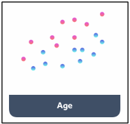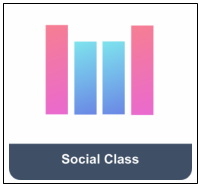The buttons on the BNClab platform offer analysis of spoken British English according to different social factors and visualise the results to allow for easier interpretation. Before the search, the buttons are inactive as there are no data to analyse; after the search term is entered, they become active as the data are loaded into each analysis. Under each button, the analysis is performed both, both the speech sample from the 1990s and on the sample from 2014 – making it easy to observe any language change that occurred over the period of 25 years in British English.
The buttons on the BNClab platform offer the following types of analysis:

1. CONCORDANCES: This function lists all occurrences of the target word in context (the context can be adjusted to a few words or to larger chunks of text).

2. GENDER: This function shows how the target linguistic feature was used by men and women.

3. AGE: This function displays the frequency of the linguistic feature according to the age of the speakers.

4. SOCIAL CLASS: This function shows how often members of different social classes use the target linguistic features. The social groups included are: working class, middle class, students and retired speakers. Some speakers are also classified as ‘unknown’ as it was impossible to determine their social class.

5. REGION: This function uses the map of the UK to visualise how frequently the target feature is used in different parts of the UK.

6. SUMMARY: This function provides a summary of social factors that play a role in the use of the target linguistic feature. It only reports the factors that were found to be statistically significant (using inferential statistics calculated in the background).